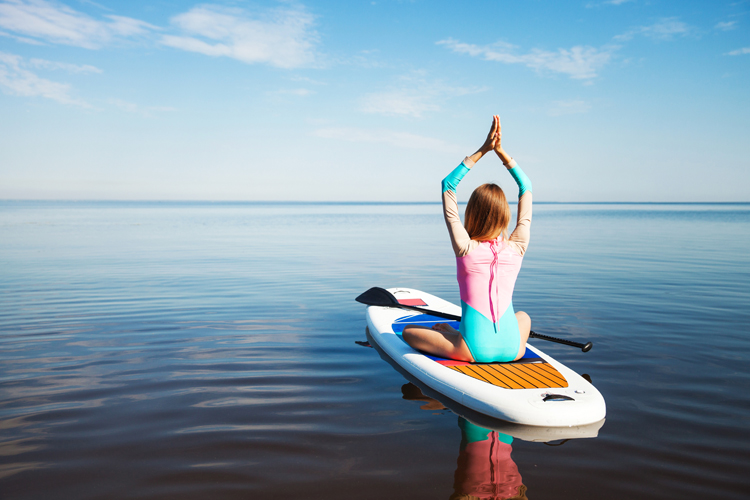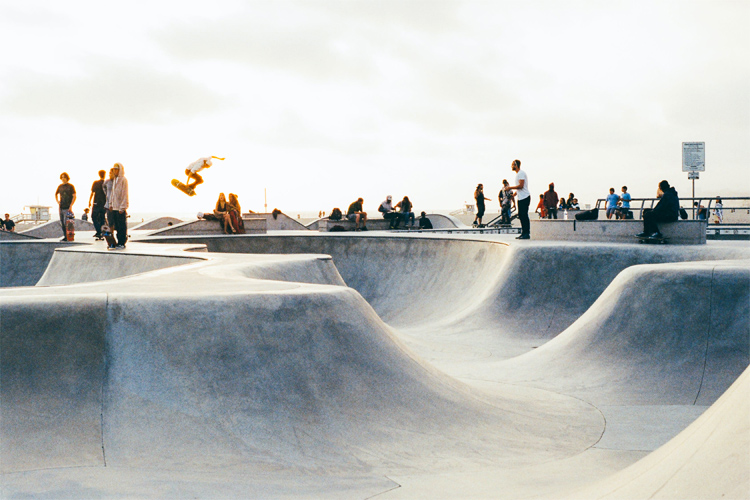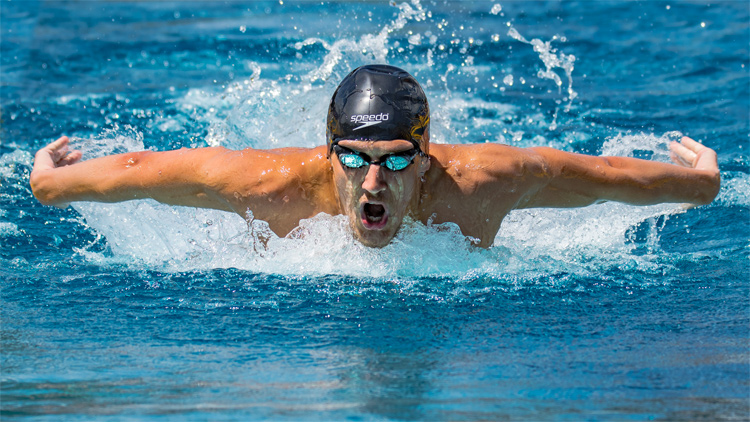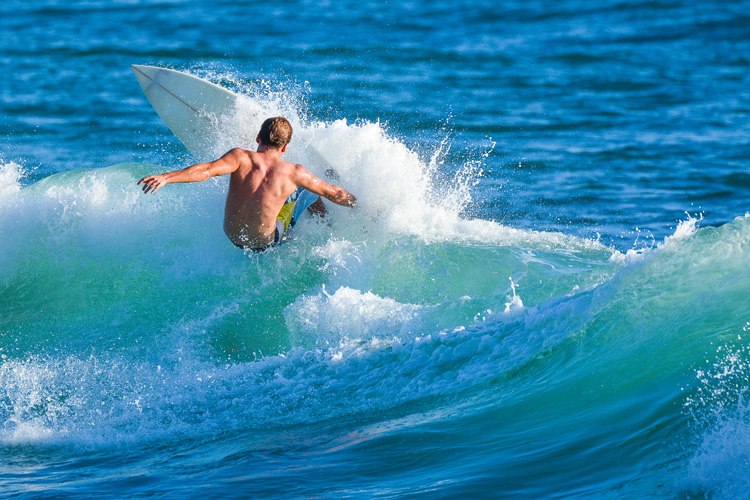Are you spending too much time sitting at an office desk? Are you feeling lazy and bored on your couch at home with nothing else to do? Let's keep those muscles ready for the next surf session.
Gyms are closed, waves aren't pumping, you're still recovering from an injury, and too much desk time results in a drastic lack of mobility.
These are only a few examples that leave surfers waiting and wondering when they'll be able to get out into the ocean next.
In the meantime, muscle atrophy is a genuine concern. How do you keep your surf muscles conditioned out of the water during long periods?
More importantly, how do you stay in shape for surfing when hitting the water isn't an option for other reasons?
Fortunately, there are things you can do in your home or office to stay in peak condition. Here are seven tips to get a surfer's body.
1. Understand the Muscles You Engage
One of the best ways to keep your muscles in great condition is through unpredictability.
Use the exercises suggested here, but feel free to add your own things as well.
This will keep your muscles guessing and ensure continued progress. To do this, you must first understand the muscles you engage when you surf.
This way, you can incorporate new exercises that involve those muscles.
Here are the key muscles that you use when surfing:
- Core muscles: They help you balance and stay upright;
- Upper body muscles: They are used for paddling and popping up;
- Glutes and quads: They engage when you are crouching;
This is a good time to evaluate your current fitness level. Ask yourself where you are struggling most.
Now, you can use the tips below to improve those areas of weakness and maintain your current fitness level.
2. Use Simple Calisthenics to Target Your Muscles
The great thing about calisthenics is that you don't need any equipment.
Yes, some resistance bands can help, maybe some light weights, but for the most part, your own body weight is plenty.
Squats, pull-ups, crunches, lunges, push-ups, and burpees are just a few exercises that will engage the muscle groups involved in surfing.
Think about the movements you make while you surf. The exercises you choose should strengthen the muscles you use when you surf.
Pay attention to any weaknesses you have currently, and prioritize your exercise routine accordingly.
3. Try Yoga
Surfing requires you to move fluidly and gracefully from one position to another. There's also a very similar spirituality.
That's why there's such a connection between surfing and yoga. You can also use yoga from a conditioning standpoint.
As you probably know, some surfing injuries are caused by overstretching muscles as well as chronic overuse and repetitive motion.
If you add a few yoga poses to your daily routine, you will improve your current shape and prevent future injuries.
Check out these surfer-friendly poses:
- Warrior to Side Angle;
- Heart Chakra Pose;
- Plank Pose;
- Goddess;
- Locust Pose;
By practicing yoga, you can increase your range of motion and flexibility. It also helps you build core muscle strength.
You don't need to have any equipment to perform these postures.
If you have a yoga mat, that's great. But if you don't have one, you can practice on the floor.
Hold each pose for a couple of breaths and switch sides.
These simple exercises will help you not only stretch and strengthen your muscles but also reduce stress levels. That's exactly what your mind and body need.

4. Embrace Cardio
No, cardio isn't weight training, but it can definitely help you become a better surfer.
With cardio, you increase your endurance, improve your breathing, and are better able to maintain a healthy heart rate even under strenuous conditions.
It doesn't matter if flat seas or bad weather are keeping you out of the ocean; cardio is a great tool for keeping you in surf-ready shape all of the time.
Try committing to some time on the treadmill, rowing machine, or elliptical to get your heart pumping and build up endurance. And go for a run.
Some surfers use high-intensity interval training (HIIT). That combines bursts of very intense training with slower intervals.
No equipment? No worries. There are plenty of free aerobic workouts available through your smart TV, video game console, mobile phone, YouTube, or other set-top devices.
5. Go Skateboarding
There's a good reason that so many surfers are also skaters. This is a great cross-training activity for you.
Skateboarding forces you to learn better balance and use the muscles you need to stay upright.
In fact, skateboarding was often called sidewalk surfing. You can even use your board to practice maneuvers.
Look for a skateboard that mimics a surfboard. Try a longboard cruiser or something similar.

6. Lift Weights
Weight training can seem repetitive at times. It can seem more like work than surfing as well.
Ignore this if you can because there's no denying the benefits of lifting weights for surfers.
In fact, even when you aren't impacted by family or professional duties, you should still incorporate strength training into your workout routine.
Here, the key is to stay focused on results, not on size or looks.
You aren't trying to gain mass. Instead, you want to increase strength and encourage your muscles to work more efficiently.
Consider working with a trainer who can help you create a weightlifting regimen that keeps your goals in mind.
As your muscles get stronger, you'll have more endurance, be less likely to become injured and reduce your recovery time.
7. Swim Laps
Most of us don't have access to a pool like now unless we have our own. Still, this is a worthy option after a quarantine.
If you have access to a pool at your gym, apartment complex, or elsewhere, book some time in the lap lanes.
Yes, swimming it's repetitive. No, it's not the ocean.
But you'll work the same muscles you use for paddling. You'll build up your breath control and stamina.

Slackline
Do you want to work on balancing skills? Slackline is a perfect solution for you. You can set up a slackline in your backyard and practice daily.
Do you have no idea how to slackline? Go on YouTube and watch video tutorials. Virtual teachers will help you to master new skills for free.
Slackline equipment is available at online sporting goods stores. You can buy it without leaving your house.
Keep Running
Here is a problem. If you don't exercise all year round, your muscles will lose their strength, and your body will gain weight.
And guess what? A few extra pounds will not enhance your surfing experience once a workweek is over.
To stay in shape, you should do some cardio to burn the calories you get by consuming office snacks.
Running is known as one of the best cardio workouts. So, if you have a treadmill, dust it out and use it for at least 15 minutes a day.
Jog in the park and enjoy the opportunity to take your cardio outdoors.

Boost Your Inner Motivation
One of the reasons why surfers stop exercising is lack of motivation.
If you know that you can't go surfing today, tomorrow, and the next week, you may feel like there is no sense in training.
But the truth is that you need to keep exercising because it's easier to maintain muscle strength rather than build it over after a long break.
Do you feel like your motivation is weakening?
We highly suggest you read books about surfing and watch surfing-related films.
That will remind you why you love surfing and why you should keep practicing even when you have no opportunity to get to the beach.
Final Thoughts
Every serious surfer should have a ready routine that keeps them in shape. You never know when you might be kept out of the water for any reason.
Now, it's the lack of swells and waves. In the future, it could be work, the weather, or an injury that you must work around.
Is surfing your biggest passion in life? Don't waste your time. Start preparing your muscles for upcoming surfing challenges.
Take some time to assess where your weak points are, and use the exercise above to make improvements.
Then, focus on retaining the fitness you need to start surfing at your best when you return to the waves.
So, please, don't waste your time. Start preparing your muscles for upcoming surfing challenges.
Words by Daniela McVicker | Social Psychologist and Blogger at topwritersreview.com
